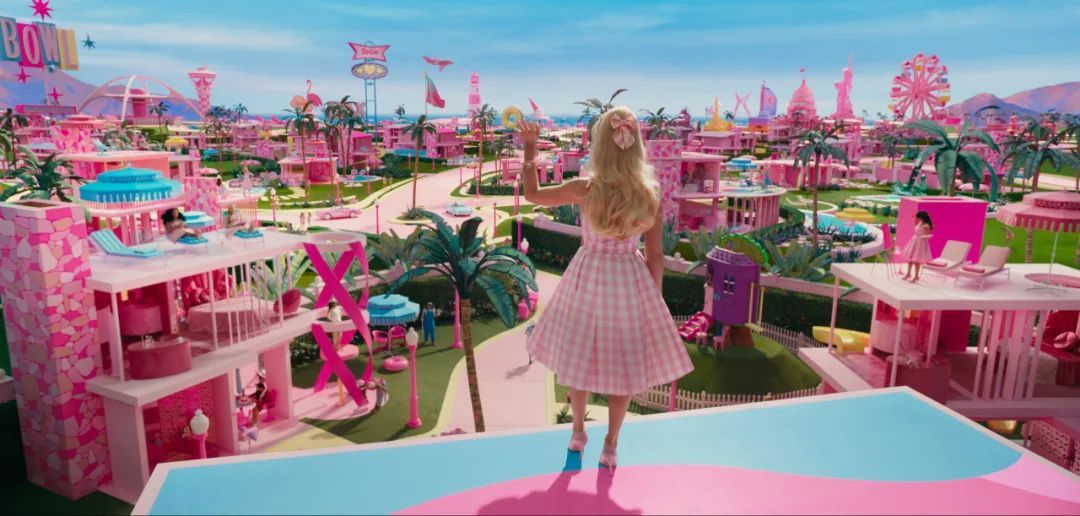The Story of Pink
)
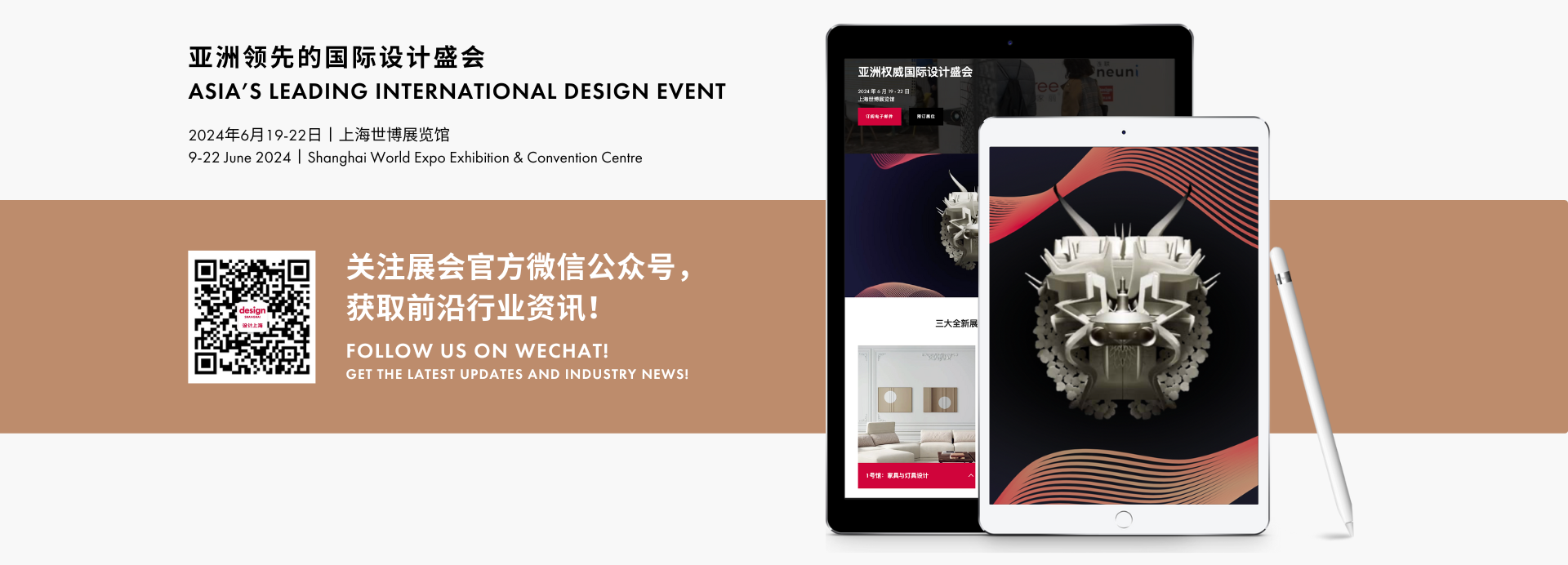
Pink has finally returned to the girls.
In color psychology, no color carries such complex meanings as pink. Often perceived as sincere, gentle, and feminine, pink has been applied to all products targeted at women during the commodification process. Girls have been tightly associated with pink since birth, making them profoundly aware that pink is synonymous with being a girl, and being a girl means pink.
The relationship between pink and the female role is so close that this color is endowed with traits similar to female stereotypes: childish, superficial, lacking authority, and lacking rigor. People instinctively link pink with femininity, but women are also the group most averse to pink. After enduring the bombardment of pink during childhood, women generally develop varying degrees of resistance to it: to appear strong, one must avoid wearing pink. Color consultants advise women entering the workforce to avoid wearing pink in government, finance, and negotiation settings because it may not be taken seriously. Men refuse to wear pink because they fear "looking like a girl." Pink has become a threat to women's social lives, leading to a widespread aversion to pink.
Pink aversion is actually a manifestation of women's self-doubt about their femininity and the sum of external discrimination against women. However, recently, under the overwhelming influence of the movie "Barbie," pink has made a high-profile comeback into everyone's embrace.
Since the birth of Barbie in 1959, a strong brand connection with pink has been established: its logo is pink, toy packaging is pink, and most of Barbie's clothes and dollhouses are pink.
Before the global release of "Barbie," news pointed out that due to the extensive use of pink fluorescent paint in the movie's set design, pink paint was severely out of stock worldwide. Barbie pink was once considered the color of consumerism, and people even jokingly referred to unpopular shades of pink lipstick as "death Barbie pink." The cold reception of the Barbie IP in the Chinese market led to the movie "Barbie" having only a 0.4% screening rate on its first day in domestic theaters. However, solely relying on the excellent reputation brought by the quality of the movie itself and the spontaneous advocacy of fans, "Barbie" achieved over 40 million RMB in box office revenue in just three days, despite having the lowest screening rate during the summer season. Meanwhile, in the few days when Barbie was released, people's perception of pink suddenly reversed: a global craze to embrace pink swept across the world, and choosing pink, whether for men or women, for sports brands or daily necessities, suddenly became an expression of confidence and strength.
We've been away from pink for too long—people started complaining that they had never bought pink clothes, so they had nothing suitable to wear to watch "Barbie." Many people began to exclaim that after watching "Barbie," they suddenly realized that pink is a beautiful color.
Barbie is now 64 years old. Alongside pink and women worldwide, she has finally told her story.
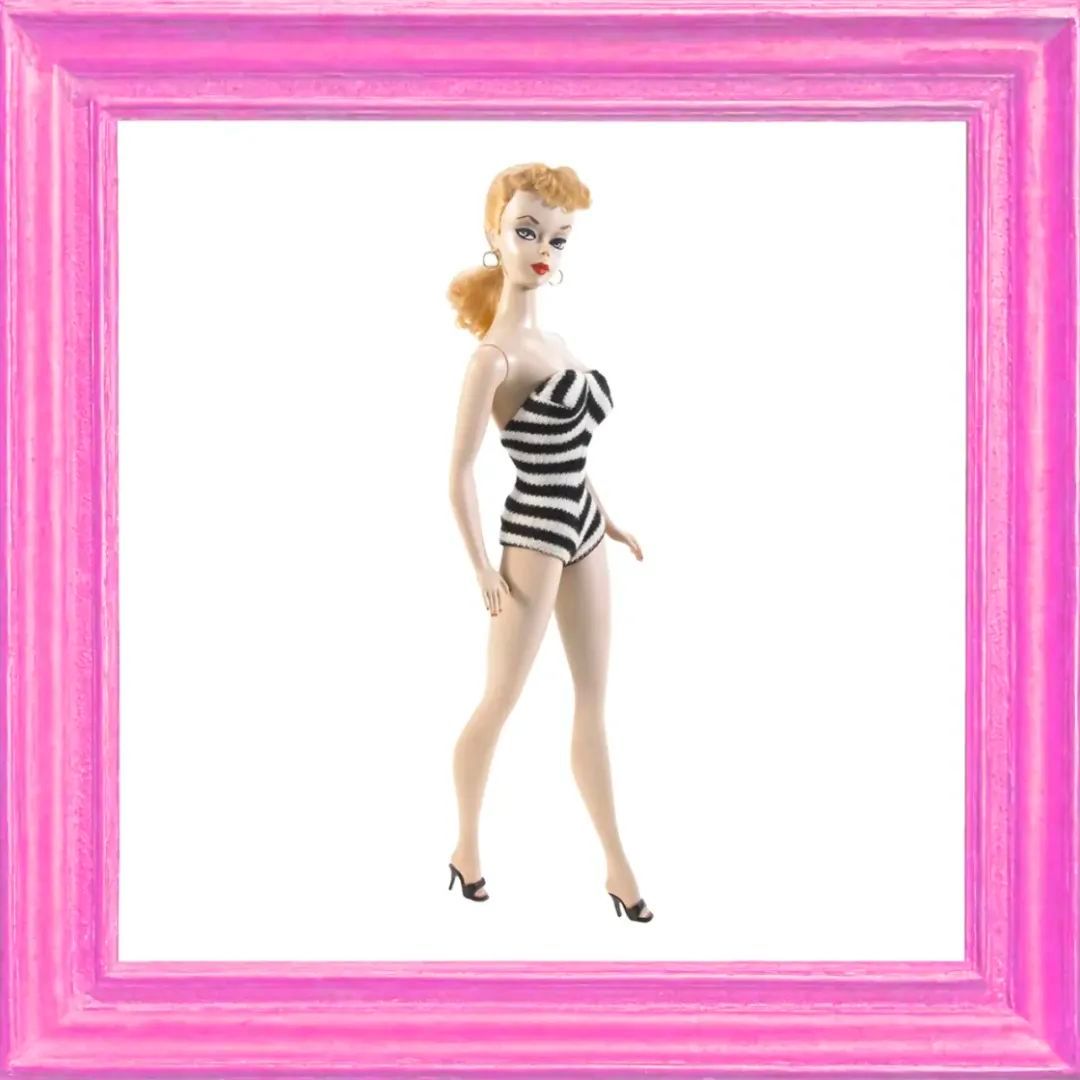
Identity Crisis of Pink Culture Icons
The opening scene of the movie "Barbie" takes place in a desert, with the sun rising slowly behind a giant original Barbie doll. A group of little girls looks up at Barbie, then, as if awakened, smashes the dolls and pretend-play toys in their hands. This scene pays homage to the classic movie "2001: A Space Odyssey" and signifies the groundbreaking significance of the advent of Barbie dolls: before Barbie appeared, all the dolls that little girls played with were just props for fictional family scenes. Girls unconsciously played the role of mothers when playing with dolls, passively accepting the idea that women must sacrifice for the family in society. With the appearance of Barbie, girls' thinking was truly enlightened: girls can be fashionable, diverse, and themselves, not just mothers.
In 1959, the first Barbie doll was unveiled at the American International Toy Fair, and she was not well-received by the market—before this, no doll had an adult figure like Barbie's. She wore a strapless striped swimsuit, heavy makeup, and stylish sunglasses, looking provocatively with a captivating gaze. Other male toy manufacturers at the exhibition told Ruth Handler, Barbie's female designer: no one wants to play with a doll with breasts. Barbie dolls defied expectations and swept the world, selling three hundred and fifty thousand dolls in their first year.

Barbie's design evolved with the women's liberation movement of the 1960s. In the early 1960s in Western countries, it was widely believed that women of any education and class should leave their jobs when they got married, becoming housewives. In 1963, Betty Friedan questioned the status quo of women confined to the family in her work "The Feminine Mystique," arguing that women's potential and future development possibilities were buried in the family. This book sparked the second wave of feminism in the United States, where women demanded more job opportunities, and before that, only 11% of married women in the United States had their own jobs. At the same time, Barbie dolls began to explore the diversity of female occupations, introducing roles such as fashion designer, singer, editor, business executive, and teacher. The astronaut Barbie introduced in 1965 even preceded the first human moon landing by four years.
The film "Barbie" emphasizes Barbie's occupational diversity. The movie creates a Barbie-led Barbie Land, where Barbie can do any job she wants. They are presidents, CEOs, firefighters, judges, Nobel Prize winners—Barbie Land eliminates all occupational gender prejudices in the real world.
Apart from the protagonist, played by Margot Robbie, known as the "classic Barbie" (also referred to as the "stereotypical Barbie" in the film), there are many other Barbies in Barbie Land, representing various races, skin colors, and body types. Such character settings actually allude to the appearance criticism that Barbie dolls have faced over the years: as a girl's toy, it was considered too sexually mature. Moreover, regardless of the identity of Barbie, all Barbies invariably have slender legs, a slim waist, and a tall figure.
Studies show that Barbie, as a female idol in toys, with her overly perfect body proportions, leads girls to pursue unrealistic body ideals. Meanwhile, with the evolution of societal views and popular culture, women gradually realize the importance of health and a good lifestyle, and the aesthetic of body shape becomes more diverse and inclusive. The emphasis on a lean physique is seen as an unhealthy representation. Mothers are no longer willing to buy Barbie dolls for their children, and Barbie's body aesthetics are gradually marginalized with changes in the market.
In 2016, Mattel redesigned Barbie, introducing three different body types: curvy, petite, and tall Barbies. Mattel hoped that Barbies with diverse body types could more accurately reflect the real world, and the single body type of Barbie became history.
That year, Barbie graced the cover of Time magazine with the headline: "Can We Stop Talking About My Body Now?" Barbie addressed long-standing social criticisms through action, but the issue of body shaming for women in real life still persists.
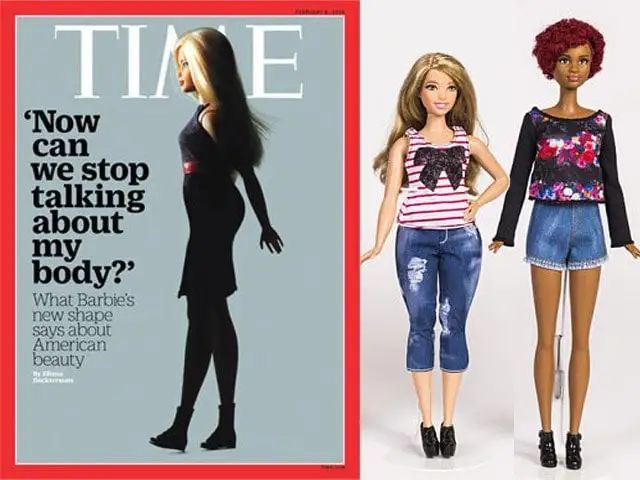
The Weapon Behind the Pink Utopia
Director Greta Gerwig, known for her acclaimed works such as "Lady Bird" and "Little Women," brings her shining expertise to the highly anticipated film "Barbie." Gerwig's cinematic approach has consistently woven feminist narratives, and "Barbie" is no exception, albeit with a distinct artistic style.
Set against the backdrop of a vibrant pink utopia known as Barbie Land, the film unfolds in 1962, a time when American women were just gaining the right to open their own bank accounts. Barbie, already having her dream house, becomes a symbol of female autonomy and independent living. Barbie Land is meticulously designed with open-air, pink-themed dream houses, creating a residential area that revolves around the lives of Barbies.
In a departure from traditional filmmaking practices, the distant natural landscapes in Barbie Land are hand-drawn, a technique commonly used in low-budget films. This extends to all elements considered non-Barbie merchandise, such as beaches, waves, vegetation, and planets, employing the same hand-drawn effect. Gerwig masterfully mirrors the real-world status of Barbie dolls, sold in boxes with decorated backgrounds mirroring the hand-drawn style of Barbie Land.
The set and lighting of Barbie Land evoke reminiscence of the 1939 film "The Wizard of Oz." Yet, Barbie's daily routine, waking up, greeting the same neighbors, hosting identical pajama parties in the evening, corresponds to "The Truman Show," where the protagonist leads a life ensnared within deception. However, Barbie Land presents two opposing stage concepts: one earnestly crafting an artificial utopia, deepening the connection between Barbie Land and the human world; the other dedicated to concealing the stage setup, revealing a fraction of the truth only at the moment of unveiling, transcending the boundaries between reality and fiction.
The interior design of the dream houses also echoes the design of real-world dream house toys: aside from the furniture Barbie uses, other house decorations (like food in the fridge, handles on cabinets, and building material patterns) remain flat. In contrast to Mattel's past dream house toys, the film simplifies and unifies the color palette of the furniture, aiming for visual coherence. Gerwig draws inspiration from the artistic design in films by French director Jacques Demy, ensuring a seamless integration of character attire and set colors, making the characters' bodies and other key elements stand out prominently in this surreal utopian setting.
Within the sea of pink, the eccentric Barbie holds a pair of pink high heels and a pair of brown work boots, symbolizing her unique life choices against the stereotypical Barbie. In this visually striking design, the audience's attention is inevitably drawn to the brown work boots, subtly encouraging a subconscious desire for Barbie to make the unconventional choice. Clearly, this scene pays homage to "The Matrix," where the red pill and blue pill represent the choice between confronting harsh reality or continuing a mundane existence.
As Barbie ventures into the real-world office building of Mattel, her toy manufacturer, she disrupts the monotony of cubicles inhabited by Mattel employees. The atmosphere at Mattel, juxtaposed against Barbie Land, appears as the antithesis: every living, breathing employee dons the same uniform, their individuality and soul subdued beneath the uniformity. The set and character portrayal at Mattel pay tribute to "Office Space," where everyone works within their respective "boxes," while Barbie breaks free from her own "box."
Greta Gerwig skillfully weaves a narrative that explores the dichotomy between Barbie Land's utopia and the corporate uniformity at Mattel. This juxtaposition serves as a commentary on societal expectations and the struggle for individuality. As Barbie escapes from her literal and metaphorical "box," the film encourages viewers to reflect on the choices they make in the face of societal norms and the pursuit of genuine happiness.
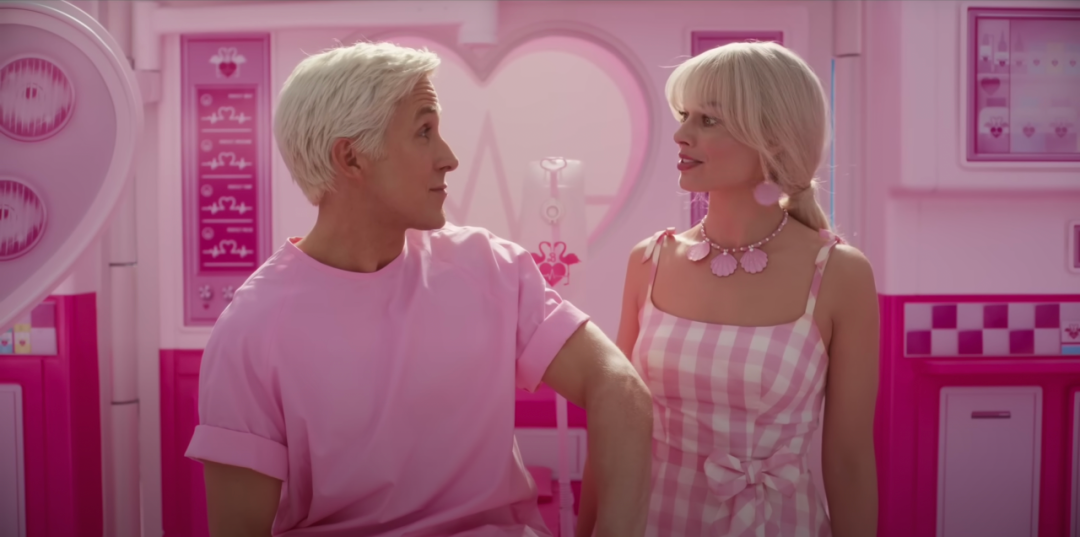
Rewritten Pink Ending
Throughout the entire film, Greta Gerwig narrates three emotions through three spaces: the pink Barbie Land represents a utopian world desired by all women, a fantasy paradise where one can be free from gender bias and be true to oneself. The real world corresponds to the world outside the cinema, where aging, sadness, and death are real truths that we need to face. At certain stages of the plot, Barbie enters an abstract imaginary world, a world where fantasy and reality connect, much like when our minds, during contemplation, detach from physical space and retreat into the mental world we construct. In this imaginary world, Barbie meets her creator—Ruth Handler, the founder of the Barbie doll—and begins to understand her past, contemplating her life's value.
In the biblical story, the initial tragedy of humanity is caused by a woman: Eve, tempted by the serpent, eats the forbidden fruit from the Tree of Knowledge and shares it with Adam. As a result, they gain the ability to discern good from evil and are eventually expelled from Eden by God. "Barbie" subtly echoes this story from Genesis in a comedic expression: influenced by the human world, Barbie suddenly becomes aware of the possibility of death in her life in Eden. While Eve is ashamed of her nakedness, Barbie cannot tolerate her bad breath, flat feet, and cellulite. She escapes from Eden with Ken, learning human behavior while searching for the truth in the human world.
Unlike Genesis, where God creates Adam first and then Eve from Adam's rib as his companion, in the Barbie doll world, Barbie's creator, Ruth Handler—essentially Barbie's God—first creates Barbie, and then Ken comes into existence. At the end of the film, Ruth Handler and Barbie touch hands, echoing Michelangelo's "Creation of Adam" scene in the Sistine Chapel. She tells Barbie that regardless of good or bad, regardless of society's expectations, women can live in any way they want. In that moment, Barbie's soul is awakened; she sees her created past, the smiles of the girls she accompanies, and she begins to understand that women do not need to be perfect.
"Barbie" is an ambitious work that, from the beginning, cannot rely on its fan base like other IP films because, as the film states, "Girls stop playing with Barbies from the age of five." The rise and fall of Barbie dolls, along with the trajectory of women's self-identity in different eras, are portrayed by Greta Gerwig using Barbie as a narrative symbol, allowing every female viewer to see themselves in Barbie. The success of "Barbie" lies in the fact that it not only tells the story of Barbie toys themselves but also helps women re-establish their intrinsic value. Throughout the nearly two-hour pink storm of the film, we are constantly moved by the female power implied by pink: she should be so strong and capable, but we have always been afraid to acknowledge her.
